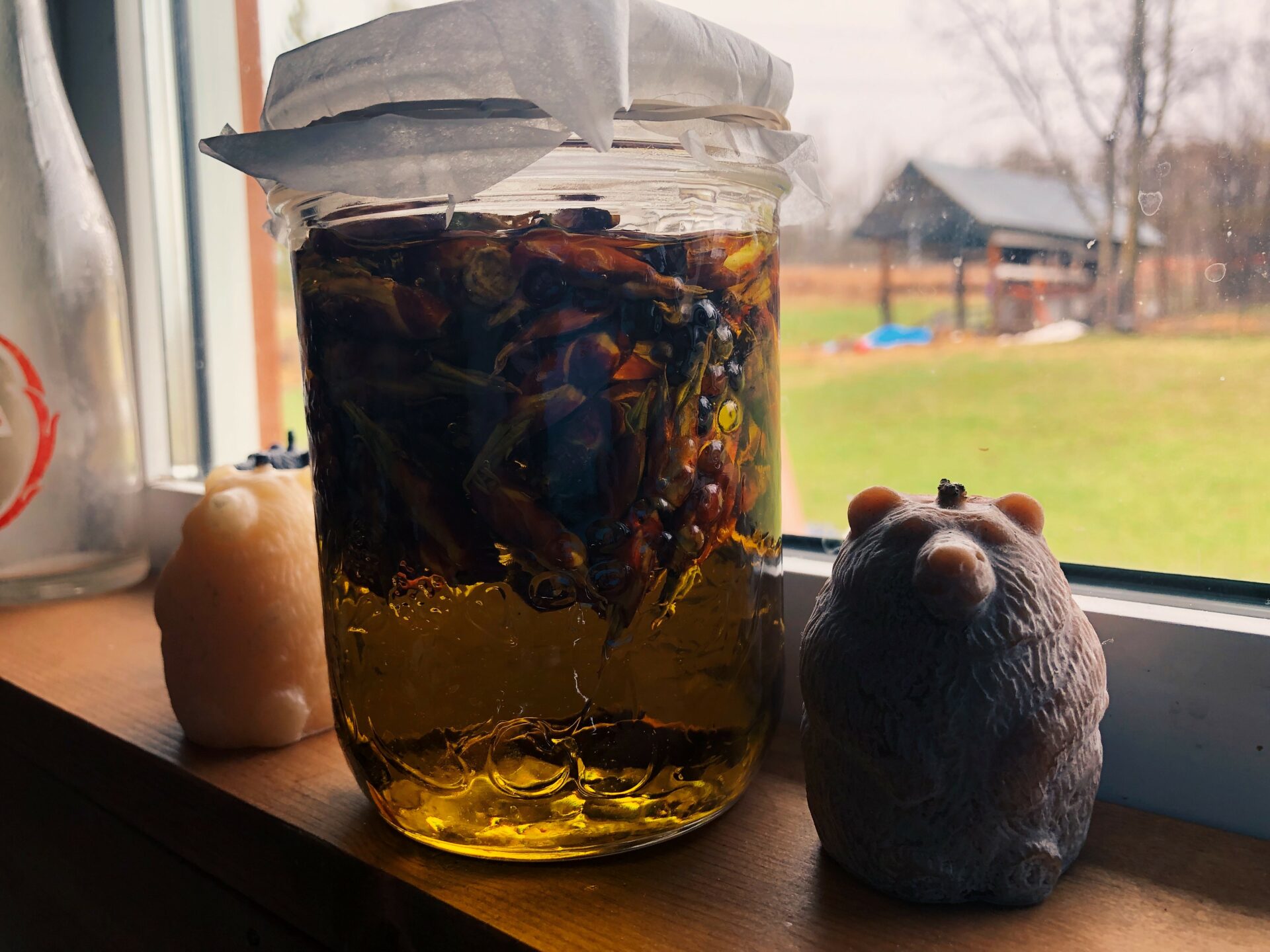Each spring brings forth anticipation for what can be foraged. Collecting the buds of cottonwood trees is one of those experiences that is synonymous with the season. The incredibly fragrant – albeit very sticky – buds of the Populus species can be turned into one of my very favourite salves.
Advertisement

Which Trees Can You Harvest Buds From?
If you are looking to make Balm of Gilead, you will need to find a patch of poplar trees. Species such as black cottonwood (Populus balsamifera ssp. trichocarpa) and balsam poplar (Populus balsamifera ssp. balsamifera) have the most fragrant and resinous buds, but I have also used trembling aspen (Populus tremuloides) buds with good success.
Advertisement
As a generalization, you will typically find black cottonwood and balsam poplar in moist, low-lying areas, while trembling aspen occurs throughout a wide range of soil conditions. This time of year, appearance of the bark will give you a hint as to what tree you have found – the former two trees have dark, furrowed bark, whereas the latter has smooth, off-white bark with blackish markings throughout.
When Can You Collect Poplar Buds?
Advertisement
The optimal time to collect poplar buds is right before the leaves burst open – depending on where you live, this could be anytime from March right through to May.
How Do You Harvest Poplar Buds?
If possible, first look to the forest floor to see if there are any windfallen branches on the ground. These branches will often have buds on them that can be harvested. Full grown trees can be quite tall, so look for ones that are a bit younger so that you can reach the branches without damaging the tree.
Keep in mind that each bud you harvest was destined to be a leaf. A good rule of thumb to follow is to avoid harvesting more than one third of the buds, and never remove a terminal bud (this is where the branch continues to grow). Remember, many animals feed on these same trees, so be observant that you are not already harvesting from a tree that may have been a critter’s snack!
Poplar buds are incredibly sticky – if you don’t want to have the resin all over your hands, a pair of gloves can minimize the mess.
How Do You Make Poplar Bud Salve/Balm Of Gilead?
First you must create an infused oil. Do this by placing the harvested buds in a jar and fill with olive oil (or another oil of your choice) until the buds are completely covered. Place cheesecloth or a coffee filter over the mouth of the jar, and tuck into a dark space for about a month. After the oil has infused, it is ready to use after straining the buds from the oil.
To make the Balm of Gilead, combine one cup of infused oil with approximately two tablespoons of beeswax in a double boiler. Pour into small containers and let cool completely before placing the lids on. It should have a consistency like an ointment.
What Is Poplar Bud Salve/Balm Of Gilead Good For?
Poplar bud salve is an excellent all-purpose salve – use it on cuts, abrasions, dry skin or insect bites to provide relief! A little bit goes a long way.
Note: When foraging, be sure to harvest in an area free of pollution. Having a good plant identification book to take with you ensures that you will correctly identify the species you are foraging for.